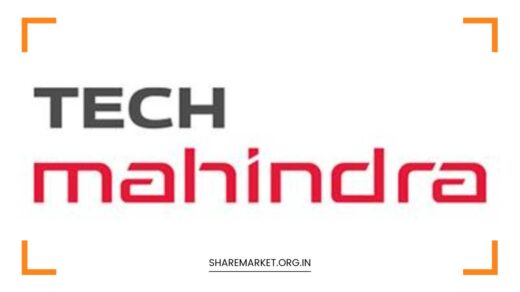Exploring Four Key Mutual Fund Categories Ideal for New Investors

Mutual Fund Categories
Exploring Four Key Mutual Fund Categories Ideal for New Investors
Investing in mutual funds is a popular choice for new investors due to their inherent diversification and professional management. However, with a myriad of mutual fund categories available, the selection process can be daunting for beginners.
In India, where the investment landscape is both vibrant and varied, understanding the fundamental categories of mutual funds can help streamline this process.
This article provides an in-depth exploration of four primary mutual fund categories suitable for new investors: Equity Funds, Debt Funds, Hybrid Funds, and Index Funds.
By delving into each category, their sub-types, key considerations, and how they align with various investment goals, new investors can make more informed decisions.
Equity Funds
Equity funds are mutual funds that primarily invest in stocks or equities of companies. These funds are considered high-growth investments, as they offer the potential for substantial returns over the long term. However, this potential comes with higher volatility and risk compared to other fund types.
Equity funds are ideal for investors who are comfortable with market fluctuations and have a long-term investment horizon.
Types of Equity Funds:
- Large-Cap Funds: These funds invest in well-established, large companies with a significant market capitalization. Large-cap companies are generally more stable and have a proven track record, which provides a balance of growth and stability. Large-cap funds are suitable for investors seeking steady returns with relatively lower risk compared to mid-cap or small-cap funds.
- Mid-Cap Funds: Mid-cap funds focus on medium-sized companies that have the potential for higher growth than large-cap companies but also come with increased volatility. These companies are often in the growth phase and can provide substantial returns if they succeed. However, the risk associated with mid-cap funds is higher, and they are more suited for investors who can tolerate short-term market fluctuations.
- Small-Cap Funds: Investing in smaller companies, small-cap funds offer the highest growth potential but also carry the highest risk. Small-cap companies are typically newer or less established, which can lead to significant price swings. These funds are best for investors with a high-risk tolerance and a long investment horizon, willing to endure the volatility for potential high returns.
- Thematic Funds: Thematic funds invest in stocks related to a specific theme or sector, such as technology, healthcare, or renewable energy. These funds are driven by a particular trend or sector-specific growth potential. While they can offer high returns if the theme performs well, they also come with sector-specific risks. Investors should be well-informed about the theme and its prospects before investing.
- Sector Funds: Sector funds focus on a particular sector of the economy, such as banking, pharmaceuticals, or technology. By concentrating on a specific industry, these funds can potentially benefit from sector-wide growth. However, sector funds also face the risk of underperformance if the sector struggles. They are suitable for investors with a strong belief in the sector’s future growth and who are comfortable with sector-specific risks.
Key Considerations for Equity Funds:
- Risk Tolerance: Equity funds can experience significant fluctuations in value. Assess your comfort level with market volatility and potential losses.
- Investment Horizon: Equity funds are generally suited for long-term investors who can ride out market ups and downs. Short-term investors might find the volatility challenging.
- Diversification: To manage risk, consider diversifying your investments across various sectors and companies. Avoid putting all your money into a single stock or sector.
Debt Funds
Debt funds invest primarily in fixed-income securities such as government bonds, corporate bonds, and money market instruments.
These funds typically offer lower risk and more stable returns compared to equity funds. Debt funds are suitable for investors seeking regular income and lower volatility, making them a popular choice for conservative investors.
Types of Debt Funds:
- Liquid Funds: Liquid funds invest in short-term debt securities, providing high liquidity and relatively stable returns. They are ideal for parking funds temporarily or for short-term financial goals. Liquid funds are known for their low risk and ease of access, though returns are generally lower compared to other debt funds.
- Money Market Funds: Money market funds are similar to liquid funds but may invest in slightly longer-term money market instruments. They offer slightly higher yields compared to liquid funds while maintaining relatively low risk. These funds are suitable for investors looking for short-term investments with better returns than traditional savings accounts.
- Short-Term Debt Funds: Short-term debt funds invest in debt securities with maturities of up to 3 years. These funds offer higher returns compared to liquid and money market funds, with a moderate level of risk. They are suitable for investors with a short to medium-term investment horizon looking for regular income.
- Long-Term Debt Funds: Long-term debt funds invest in debt securities with maturities extending beyond 3 years. They generally offer higher returns compared to short-term debt funds but come with increased interest rate risk. Long-term debt funds are suited for investors who can commit their money for a longer period and are comfortable with interest rate fluctuations.
- Credit Risk Funds: Credit risk funds invest in debt securities issued by companies with higher credit risk. While they offer the potential for higher returns, they also come with increased default risk. These funds are suitable for investors willing to take on higher risk in exchange for potentially better returns.
Key Considerations for Debt Funds:
- Interest Rate Sensitivity: Debt funds are affected by changes in interest rates. When rates rise, the value of existing bonds may decrease, impacting fund returns.
- Credit Risk: Evaluate the credit quality of the securities in the fund’s portfolio. Higher credit risk can lead to higher returns but also increases the possibility of defaults.
- Liquidity: Consider your need for access to funds. If you require easy access to your investments, opt for liquid or money market funds.
Hybrid Funds
Hybrid funds combine investments in both equity and debt securities, offering a blend of growth and stability. These funds aim to provide a balanced approach by diversifying across asset classes, catering to investors seeking a mix of risk and return.
Types of Hybrid Funds:
- Balanced Funds: Balanced funds maintain a fixed allocation between equity and debt securities. This fixed ratio ensures a balanced exposure to both growth (through equities) and stability (through debt). Balanced funds are suitable for investors looking for a steady approach with moderate risk.
- Dynamic Asset Allocation Funds: Dynamic asset allocation funds adjust their allocation between equity and debt based on market conditions. These funds aim to optimize returns by dynamically shifting investments according to market trends and economic conditions. They are ideal for investors who prefer a flexible approach and want the fund manager to make allocation decisions based on market outlook.
- Arbitrage Funds: Arbitrage funds seek to profit from price differences between related securities in different markets. These funds exploit price discrepancies and are typically less volatile. Arbitrage funds are suitable for investors looking for relatively stable returns with lower risk, as they generally involve minimal market risk.
Key Considerations for Hybrid Funds:
- Risk Appetite: Hybrid funds offer a mix of equity and debt exposure. Assess your comfort level with both asset classes and their respective risks.
- Investment Goals: Determine whether your priority is growth, income, or a combination of both. Different hybrid funds have varying strategies to meet specific goals.
- Allocation Strategy: Understand how the fund’s allocation between equity and debt will affect its performance and risk profile. Some hybrid funds have fixed allocations, while others are dynamically managed.
Index Funds
Index funds are mutual funds that aim to replicate the performance of a specific market index, such as the Nifty 50 or the Sensex. These funds offer a passive investment strategy, meaning they seek to match the performance of an index rather than outperform it.
Key Benefits of Index Funds:
- Low Costs: Index funds generally have lower expense ratios compared to actively managed funds. Since they do not require active management, the cost savings are passed on to investors. Lower costs can significantly enhance long-term returns.
- Diversification: By tracking a broad index, index funds provide instant diversification across a wide range of stocks. This diversification helps in mitigating risk and reducing the impact of poor performance from individual stocks.
- Simplicity: Index funds offer a straightforward investment strategy. Investors do not need to research individual stocks or manage asset allocation actively. This simplicity makes index funds an attractive option for new investors.
Key Considerations for Index Funds:
- Market Performance: The performance of index funds is directly linked to the performance of the underlying index. If the index performs well, the fund performs well, and vice versa.
- Tracking Error: This measures how closely the fund’s performance matches the index. Lower tracking error indicates better alignment with the index.
- Long-Term Investment: Index funds are typically best suited for long-term investors who seek steady, market-matching returns.
Choosing the Right Category
Selecting the appropriate mutual fund category depends on individual financial goals, risk tolerance, and investment horizon. Here are some factors to consider when choosing the right category for your investments:
- Risk Tolerance: Assess your comfort level with market fluctuations and potential losses. Equity funds offer higher growth potential but come with higher risk, while debt funds provide more stability with lower risk.
- Investment Horizon: Determine how long you plan to invest. Equity funds are suitable for long-term investments, whereas debt funds can cater to both short-term and long-term needs depending on their specific type.
- Financial Goals: Identify what you aim to achieve with your investments. Are you looking for capital appreciation, regular income, or a balance of both? Your goals will guide you in selecting the most appropriate mutual fund category.
- Liquidity Needs: Consider how easily you need to access your funds. If you require quick access, liquid or money market funds may be suitable. For longer-term goals, you might opt for equity or hybrid funds.
- Tax Implications: Understand the tax implications of different fund categories. For example, long-term capital gains from equity funds may be taxed differently compared to gains from debt funds.
Additional Tips for New Investors
- Start Small: Begin with a small amount to familiarize yourself with investing. As you gain confidence and experience, you can gradually increase your investments.
- Diversify: Spread your investments across different funds and categories to reduce risk and enhance potential returns. Diversification helps in managing the impact of poor performance from any single investment.
- Stay Informed: Keep up with market news and trends. Staying informed helps in making better investment decisions and understanding market movements.
- Review Your Investments Regularly: Periodically assess the performance of your investments and make adjustments as needed. Regular reviews ensure that your investment portfolio remains aligned with your financial goals.
- Seek Professional Advice: If you are unsure about which category to choose, consider consulting with a financial advisor. A professional can provide personalized recommendations based on your financial situation and goals.
Final Remarks
Understanding the four key mutual fund categories—Equity Funds, Debt Funds, Hybrid Funds, and Index Funds—can significantly aid new investors in making informed decisions. Each category offers distinct features, benefits, and risks, catering to different investment needs and preferences.
By evaluating your risk tolerance, investment horizon, financial goals, and liquidity needs, you can select the most suitable mutual fund category to build a strong foundation for your investment journey.
With careful planning and informed choices, you can navigate the investment landscape effectively and work towards achieving your financial objectives.

















